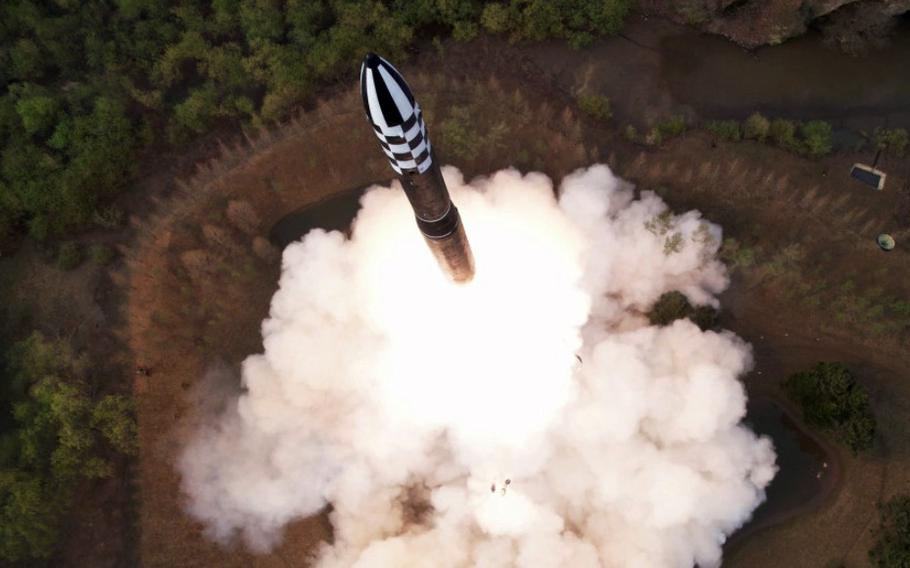
North Korea launched a solid fueled Hwasong-18 intercontinental ballistic missile, April 13, 2023, according to the state-run Korean Central News Agency. (KCNA)
CAMP HUMPHREYS, South Korea — North Korea on Friday said it successfully test fired a “new type” of solid-fuel intercontinental ballistic missile the previous day, an improvement over its existing fleet of liquid-fueled missiles.
The missile, dubbed the Hwasong-18, demonstrated the viability of its solid-fuel engine and that it “would serve as a powerful strategic attack means” for the communist regime, the Korean Central News Agency reported Friday.
North Korean leader Kim Jong Un presided over the launch and said the Hwasong-18 "will extensively reform the strategic deterrence components of [North Korea], radically promote the effectiveness of its nuclear counterattack posture and bring about a change in the practicality of its offensive military strategy,” KCNA said.
South Korea’s Joint Chiefs of Staff detected a medium- to long-range ballistic missile fired from near Pyongyang toward the Sea of Japan, or the East Sea, at 7:23 a.m. Thursday, it said that morning. The launch prompted Japan’s alert system to warn residents in Hokkaido to seek shelter.
An early analysis of the missile suggested it used solid fuel as a propellant, a South Korean defense official told Stars and Stripes by phone Thursday. South Korean officials customarily speak to the media on condition of anonymity.
North Korea has been developing solid fuel missiles since 2019 and is likely to replace some of its older, liquid-fueled inventory, according to a white paper from South Korea’s Ministry of National Defense earlier this year.
Solid-fuel ICBMs have several benefits over liquid fuel: They require less preparation, can be launched quicker and are less susceptible to detection prior to launch.
KCNA in December reported the regime had tested a solid-fueled rocket motor for a new strategic weapon. During a Feb. 8 military parade, North Korea unveiled transporter-erector launchers carrying what appeared to be new, solid-fuel missiles, according to 38 North, a North-Korea monitoring organization based in Washington, D.C.
Kim at a party meeting in January 2021 pledged to develop solid-fuel ICBMs and submarine-launched ballistic missiles, according to KCNA. He cited hostile behavior by the South and the United States as justification for the North’s weapons research and threatened a preemptive nuclear strike if necessary to defend the regime.
North Korea has launched 12 ballistic missiles in nine separate days of testing so far this year. Prior to the purported ICBM launch on Thursday, the regime on March 16 launched an ICBM that flew roughly 620 miles before splashing into the Sea of Japan.
The latest launch comes roughly a week after U.S. and South Korean forces wrapped up a series of monthlong joint military exercises. Washington and Seoul characterized the drills as routine and defensive in nature.
North Korea contests that characterization and has described them as a declaration of war.